The product Inventory tab is useful for more than just making inventory adjustments. The Inventory tab is only accessible if the inventory tracking was turned on for the product.
Some of the things the screen details:
- Warehouse stock counts
- Pending sales counts
- Total inventory value
- Each transaction and its costings
- Quantities remaining and running counts for each transaction
If you have multiple warehouses then you will see a warehouse summary screen that summarises the stock counts for each warehouse.
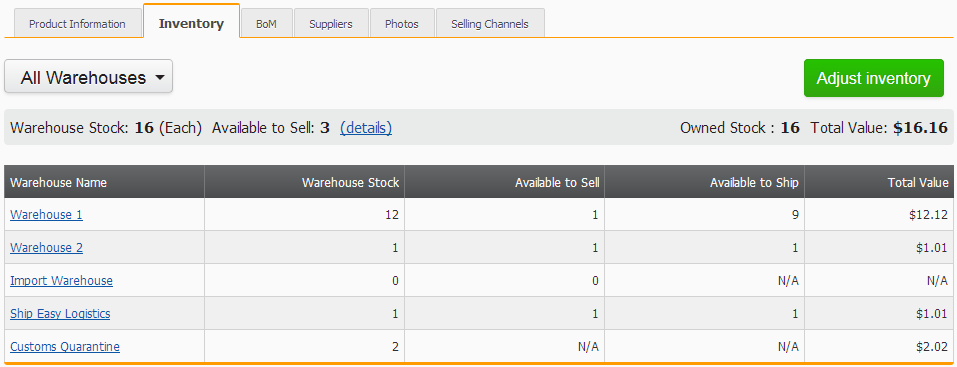
Selecting a warehouse will display the transaction details for the warehouse. If you don't have multiple warehouses, then you will bypass the warehouse screen and go directly to the detailed view of your default primary warehouse.
Some transactions like sales, purchases and the opening stock count are automatically reported on the Inventory tab. So too, are stocktakes loaded in from the Stocktake List screen.
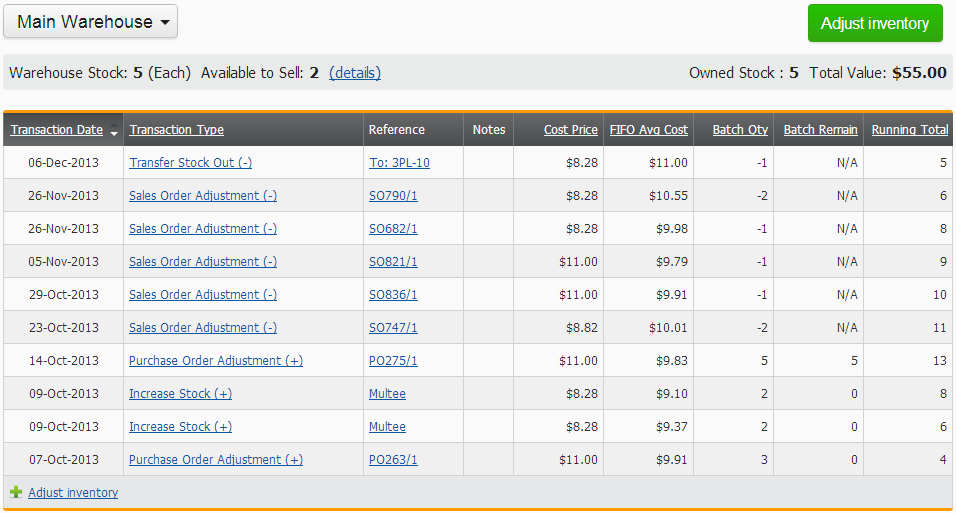
If you are integrated with Xero, then all inventory adjustments, except warehouse transfers will be posted as a journal entry through to Xero. The list of inventory transactions will include direct links to Xero, where you can view the journal transaction.
Inventory overview
![]()
- Warehouse Stock
- This is your physical stock.
- Available to Sell
- Your physical stock less all unshipped sales orders. This can be in the negatives, if you have more sales orders than stock.
- Details link
- The link displays a breakdown of the current status of the inventory requirements for the product.
- Owned Stock
- The quantity of stock based for all your Own and 3PL type warehouses. If you don't have multiple warehouses, then this will be all your physical stock.
- Total Value
- The value of your physical stock based on your cost price.
Detailed inventory breakdown
You can get a detailed breakdown of your current stock allocations by:
- Opening a product and from the Inventory tab, selecting the (details) link just above the list of warehouses or inventory adjustments.
- Viewing a Pending sales order and selecting the Available icon in each product line.
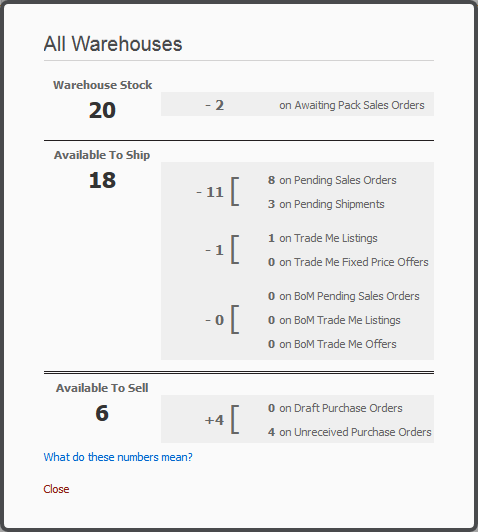
- Warehouse Stock
- The actual physical quantity in stock.
- Available to Ship
- This is the physical stock less any awaiting pack (printed) shipments.
- Available to Sell
-
This is the stock that is available after allowing for all allocations of the stock. It does not include purchase orders.The Available to Sell count takes the following allocations into account:
- Pending sales orders.
- Pending shipments.
- Printed awaiting pack shipments.
- Current Trade Me listings.
- Current fixed price offers.
- BoM products on pending sales orders.
- BoM products currently listed on Trade Me.
- BoM products currently assigned to fixed price offers.
It is used in the following situations:
- Trade Me – to determine if a product can be auto-listed.
- Trade Me – to determine if a listing can be fixed price offered.
- Trade Me – to determine the maximum quantity that can be put on a buy now only listing.
- Trade Me – to determine if listings should be automatically withdrawn (if this feature is enabled).
- Shopify – used as the product's available inventory balance.
- Purchase Orders
- The draft and the unreceived purchase order counts are displayed for informational purposes only.
Manual stock adjustments
You can make manual adjustments to your inventory, like:
- Stock breakages
- Obsolete stock
- Reducing stock
- Increasing stock
- Warehouse transfers if you have multiple warehouses
Stocktakes can only be done from the Stocktakes screen.
You can make a manual stock adjustment to a product at anytime by selecting the Adjust inventory button or link, on the products Inventory tab. This should display the Adjust Inventory dialogue.
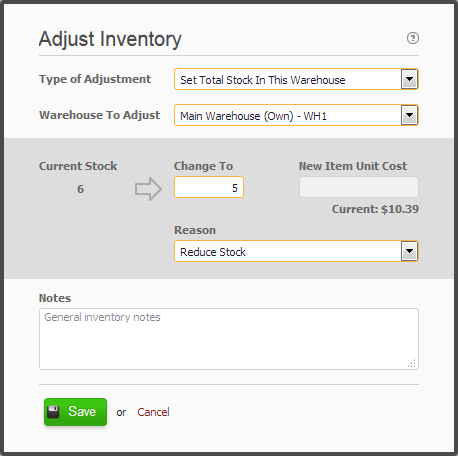 From here you can set the Type of Adjustment.
From here you can set the Type of Adjustment.
 When setting the Change To quantity for the Set Total Stock option, this should always be a positive number. The incrementing or decrementing is handled automatically based on the Change To quantity.
When setting the Change To quantity for the Set Total Stock option, this should always be a positive number. The incrementing or decrementing is handled automatically based on the Change To quantity.
Any time the adjustment reduces the stock, you will need to set the Reason, which can be for obsolete stock, a breakage or just a reduction.
When specifically selecting an increase or a decrease in stock you will need to set the relevant Increase By or Decrease By value.
Any time you opt for an increase in stock you will need to consider entering a cost price for the new stock.
When making a transfer between warehouses, you will need to set the From and To warehouse.
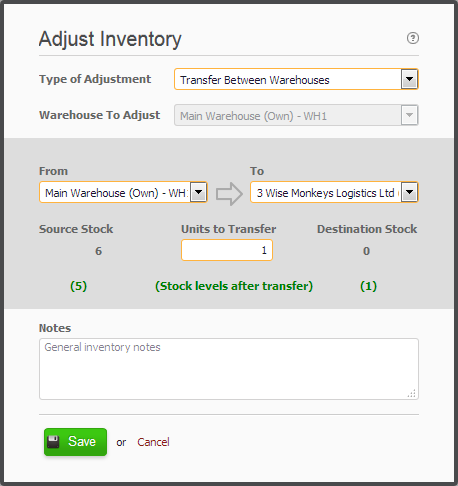 Transferring stock is only available if you have multiple warehouses.
Transferring stock is only available if you have multiple warehouses.
Manual cost price adjustments
You can make manual cost price adjustments to your inventory.
The cost price should exclude GST even if your organisation is not registered for GST.
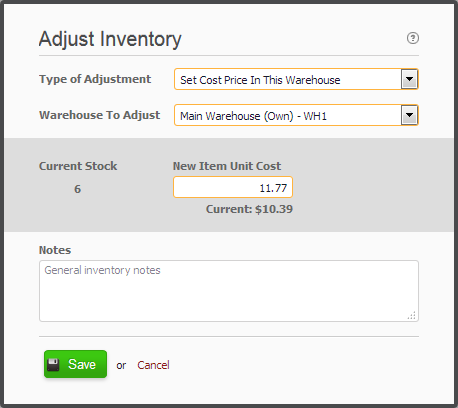
Select the set cost price adjustment type to update the cost price for all the stock in each warehouse. If you have multiple warehouses then you will need to select the warehouse to update for each update.